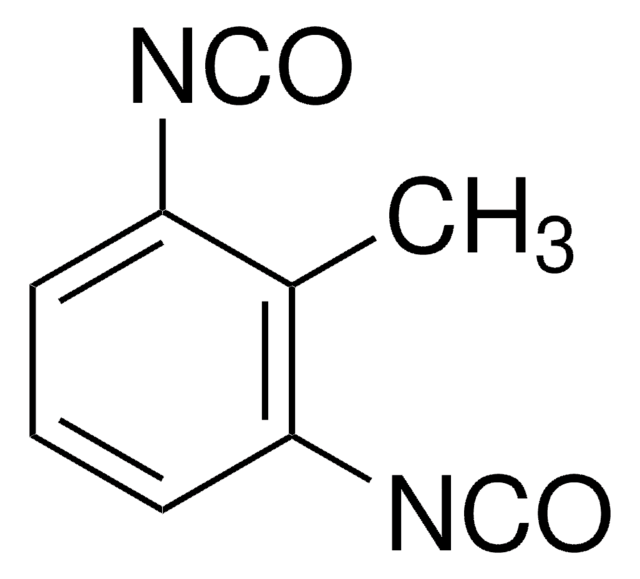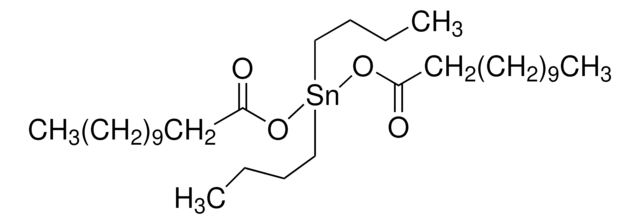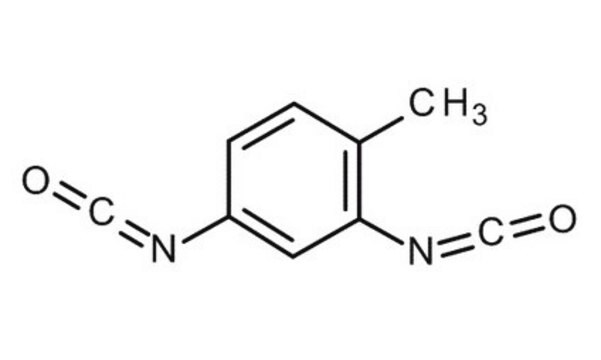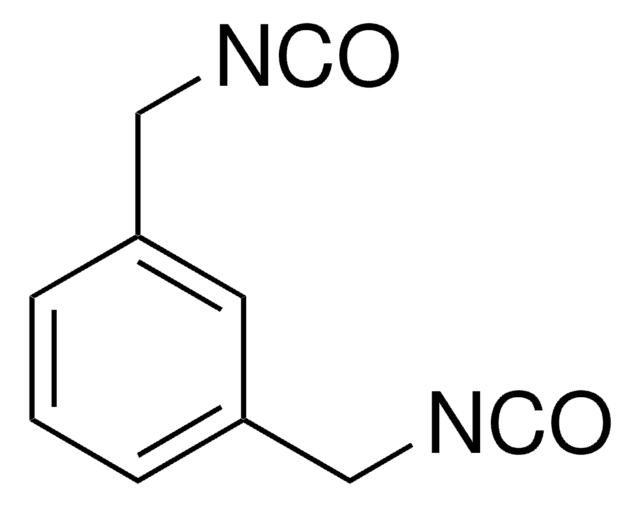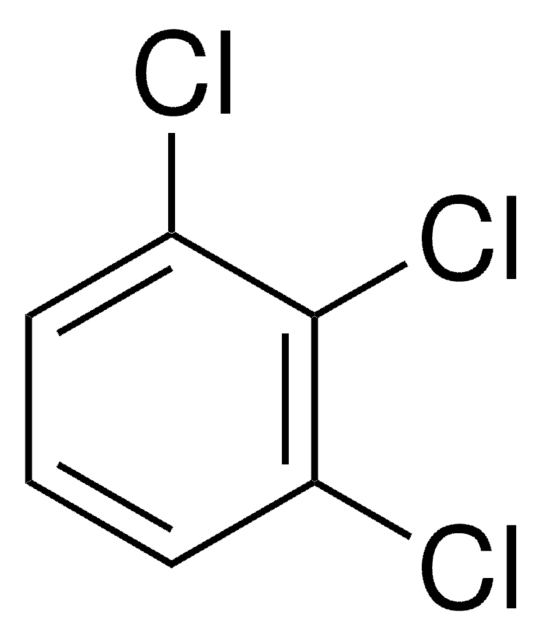223867
Tolylene-2,6-diisocyanate
97%
Synonym(s):
2-Methyl-m-phenylene diisocyanate
About This Item
Recommended Products
Quality Level
Assay
97%
form
liquid
autoignition temp.
>1148 °F
refractive index
n20/D 1.571 (lit.)
bp
129-133 °C/18 mmHg (lit.)
density
1.225 g/mL at 25 °C (lit.)
storage temp.
2-8°C
SMILES string
Cc1c(cccc1N=C=O)N=C=O
InChI
1S/C9H6N2O2/c1-7-8(10-5-12)3-2-4-9(7)11-6-13/h2-4H,1H3
InChI key
RUELTTOHQODFPA-UHFFFAOYSA-N
Looking for similar products? Visit Product Comparison Guide
Related Categories
Signal Word
Danger
Hazard Statements
Precautionary Statements
Hazard Classifications
Acute Tox. 2 Inhalation - Aquatic Chronic 3 - Carc. 2 - Eye Irrit. 2 - Resp. Sens. 1 - Skin Irrit. 2 - Skin Sens. 1 - STOT SE 3
Target Organs
Respiratory system
Storage Class Code
6.1A - Combustible acute toxic Cat. 1 and 2 / very toxic hazardous materials
WGK
WGK 2
Flash Point(F)
230.0 °F - closed cup
Flash Point(C)
110 °C - closed cup
Personal Protective Equipment
Choose from one of the most recent versions:
Already Own This Product?
Find documentation for the products that you have recently purchased in the Document Library.
Customers Also Viewed
Global Trade Item Number
| SKU | GTIN |
|---|---|
| 223867-1G | 4061838778734 |
| 223867-5G | 4061838778741 |
Our team of scientists has experience in all areas of research including Life Science, Material Science, Chemical Synthesis, Chromatography, Analytical and many others.
Contact Technical Service

